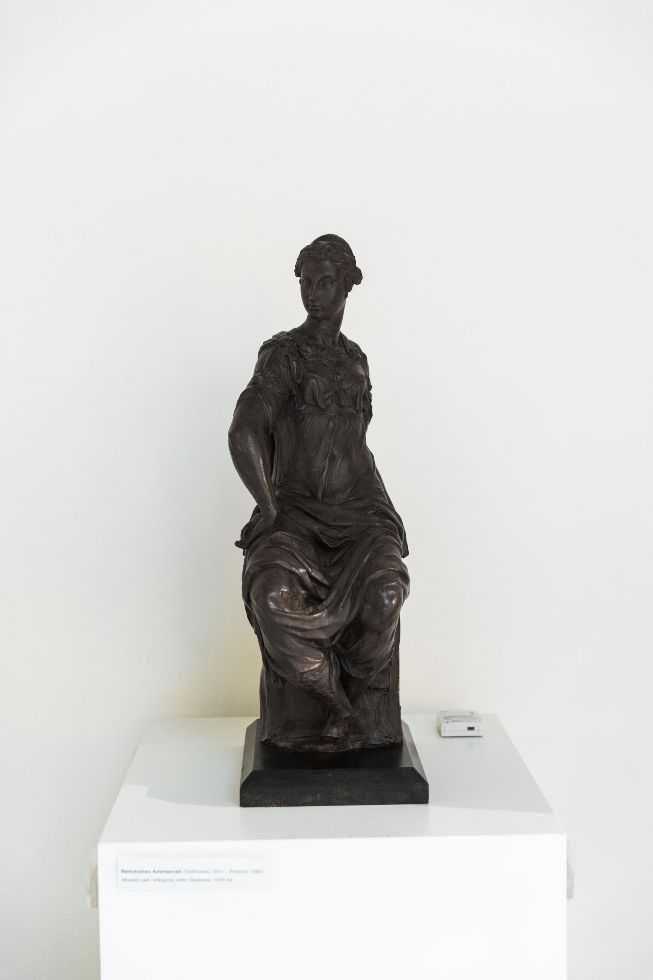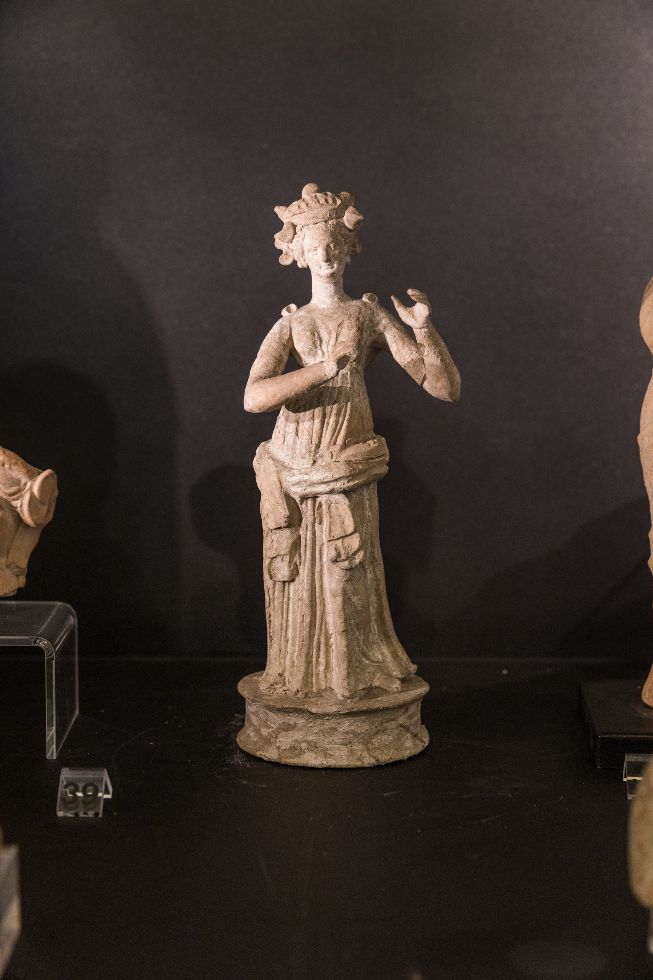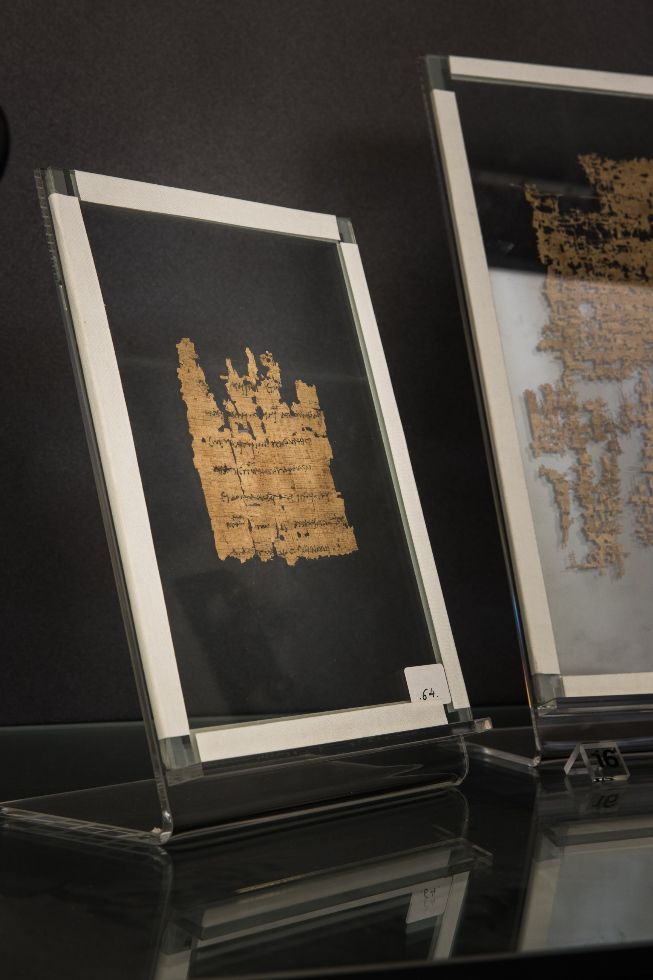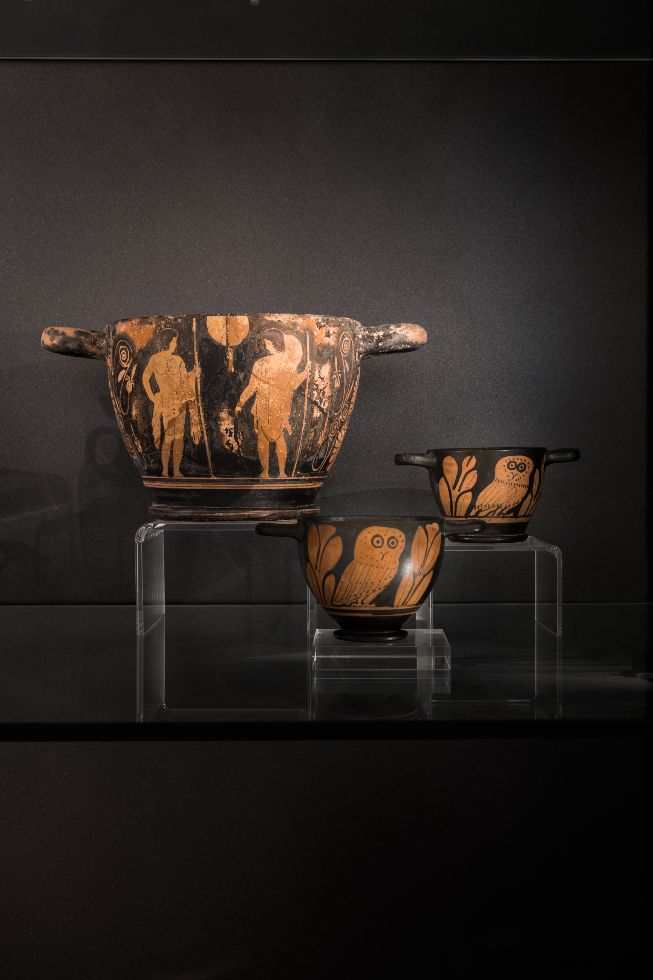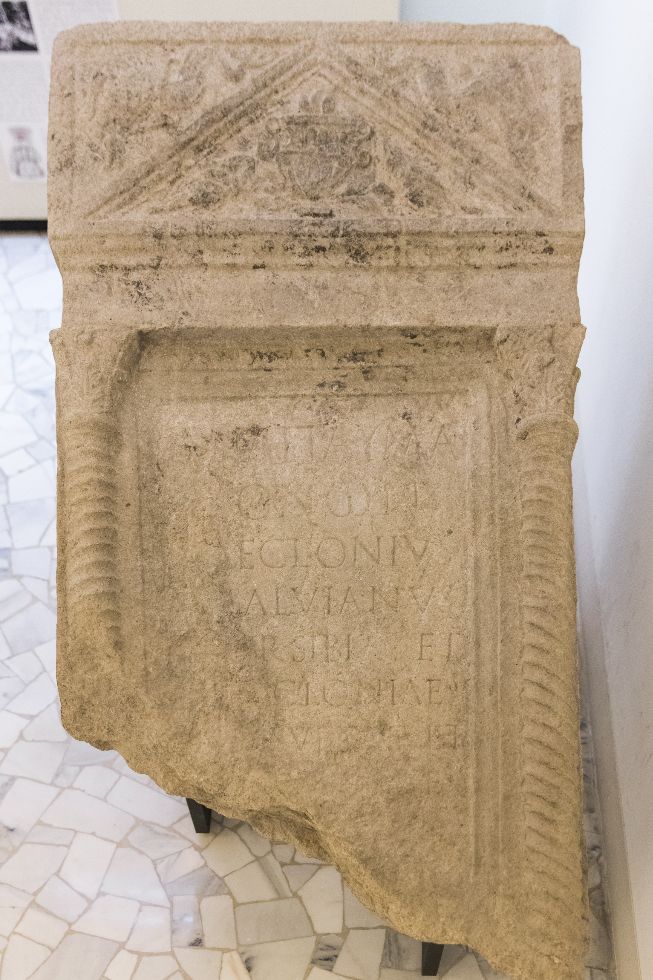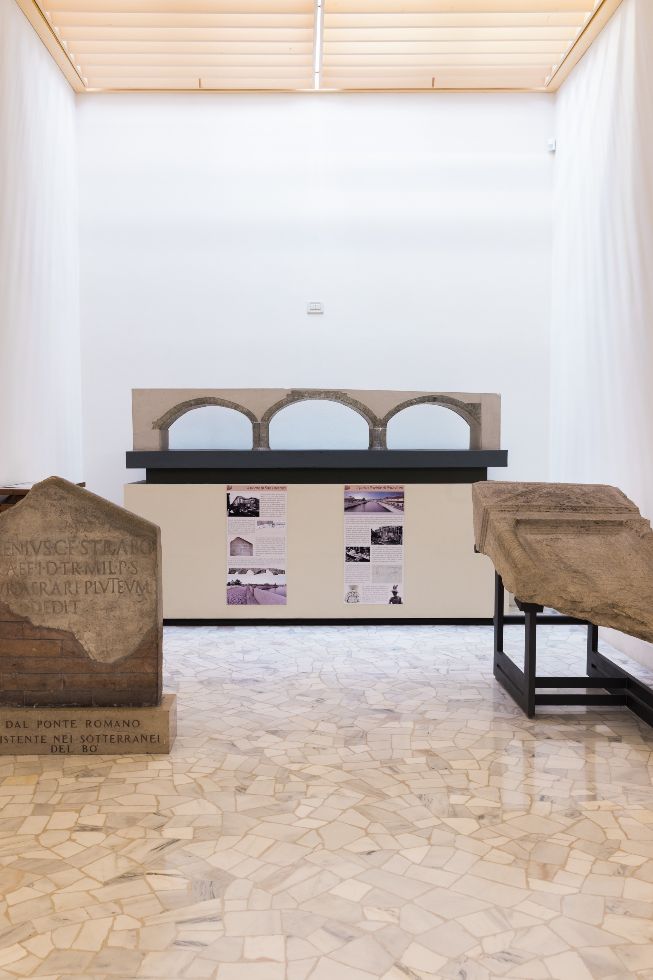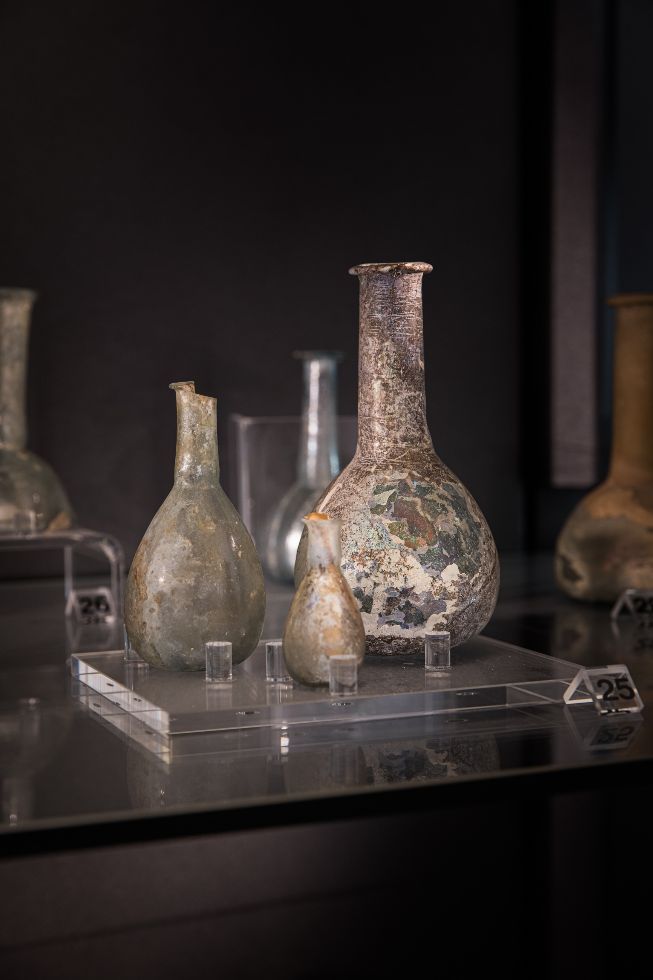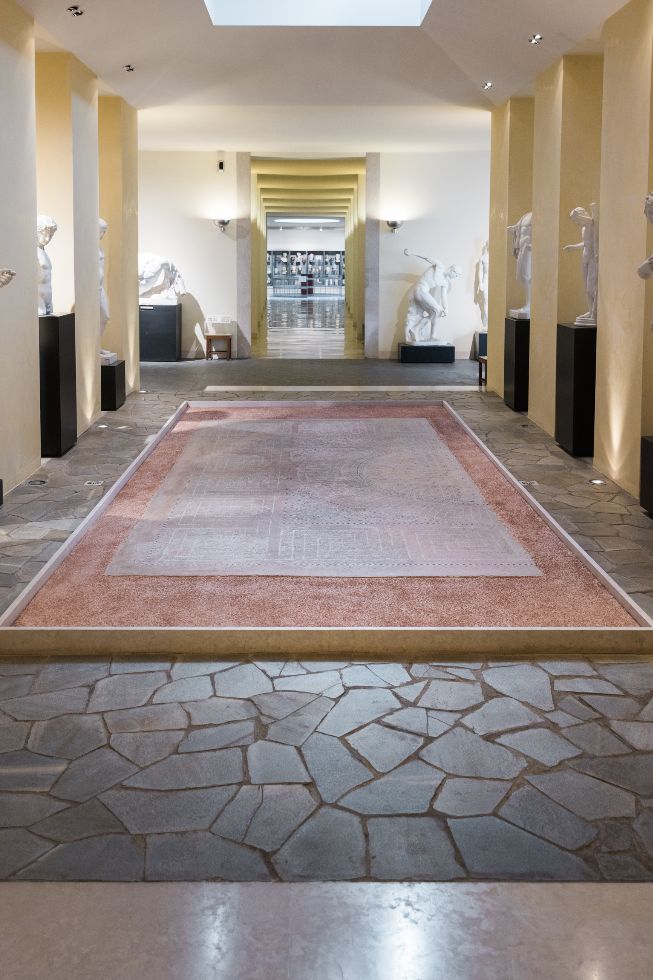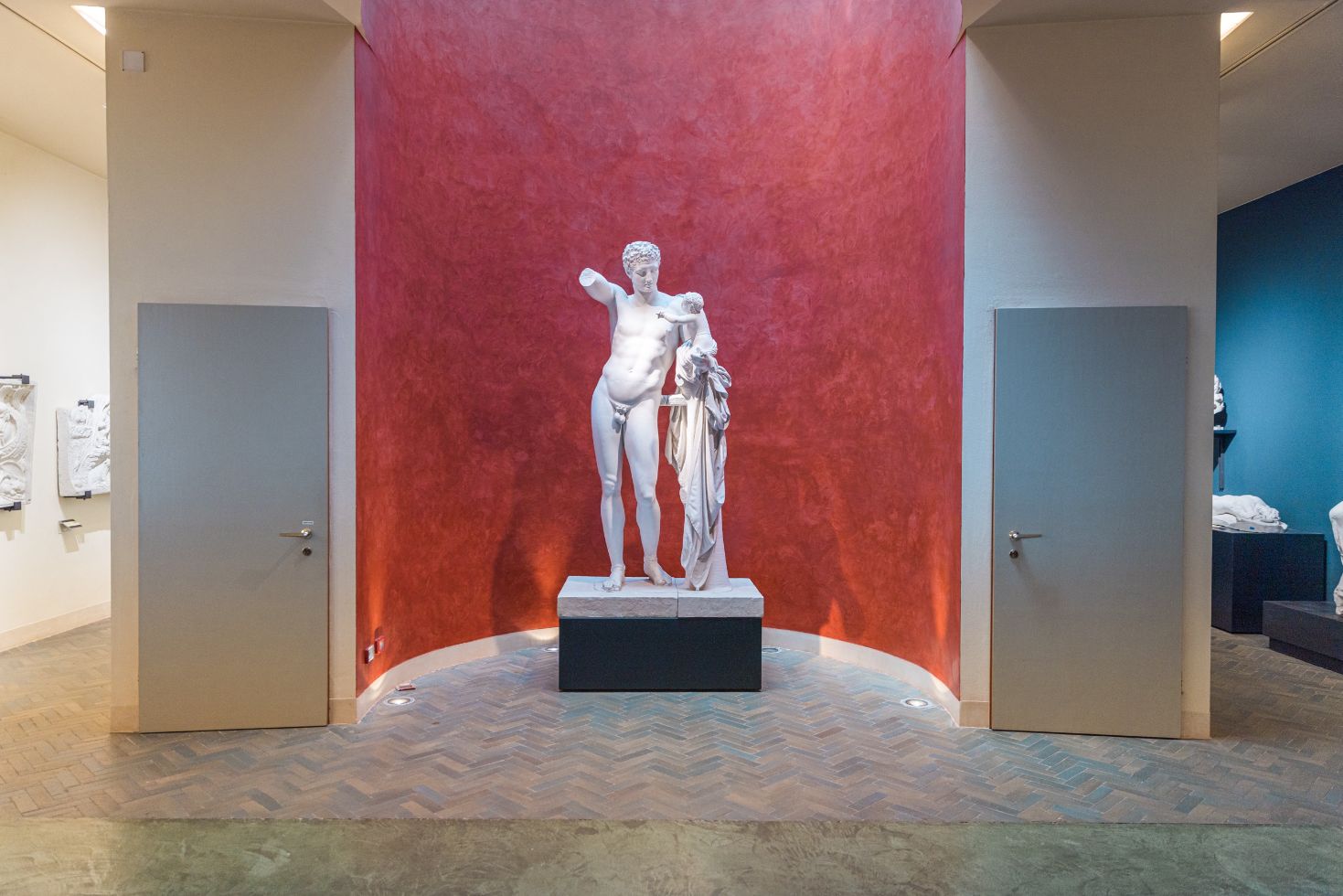Complete citizenship itinerary
This itinerary is dedicated to citizens to discover the Museum of Archaeological Sciences and Art of the University of Padua.
Museo: Museo di Scienze Archeologiche e d’Arte dell'Università di Padova
Sala Benavides: Bartolomeo Ammannati, Allegory of Wisdom
This section focuses on the Sala Benavides and on the Allegory of Wisdom created by Bartolomeo Ammannati.
The statue of the Allegory of Wisdom is located in the first room of the museum, dedicated to the sixteen-century collection of the Paduan jurist Marco Mantova Benavides. Benavides was a humanist and patron of artists during his time. The objects on display in this room were acquired by Antonio Vallisneri, a professor at the University of Padua, in the early eighteen century and later donated to the university by his son in 1733.
The sculpture was created around 1545 by Bartolomeo Ammannati and serves as the model for the statue located on the right side of the funerary monument of Benavides in the Church of Santi Filippo and Giacomo agli Eremitani in Padua. It depicts the allegorical figure of Wisdom, portrayed wearing a garment adorned with embroidery resembling armor and masquerons. These details are reminiscent of the classical Greek deity Athena or the Roman goddess Minerva, who were associated with wisdom. The statue is incomplete in its articulations, indicating that it was created prior to the figures present in the sepulcher.
Sala Benavides: Votive statuette of Isiac or Isis offerer
This section focuses on another find contained in the Benavides room: the votive statuette of an Isiac offerer.
In the third and final niche, starting from the back wall of the room dedicated to collecting, there is a Roman marble sculpture (1st century AD) depicting a female figure. It is most likely an offering devotee or even the goddess Isis herself.
Typically, priestesses of Isis were depicted with a musical instrument called a sistrum, a bronze rattle with holes through which small rods passed. When shaken, these rods struck the outer plate, producing a miraculous sound. Additionally, with their left hand, these priestesses would often hold a ceremonial vessel called a situla. The head of the sculpture was added at a later time and dates back to the first half of the 3rd century AD. It was common to reuse statues from different eras by modifying them and adding missing parts.
The statue was discovered in Padua in the early 16th century during the construction of the Venetian walls of the city.
Room 1 and 2: Carlo Anti and Egypt
This section focuses on the role of Carlo Anti, rector of the University of Padua (1932-1943) and professor of classical archeology who set up an Italian Archaeological Mission in Egypt (1930-1936), specifically in the village of Tebtynis (today's Umm el- Baragat), south of Cairo.
Since the late 19th century, Rome and other European capitals became leading figures in archaeological excavations throughout the Mediterranean, initiating campaigns that combined scientific and expansionist goals.
Under the direction of Carlo Anti, the Rector of the University of Padua (1932-1943) and a professor of Classical Archaeology, the Italian Archaeological Mission in Egypt was launched (1930-1936) specifically in the village of Tebtynis (modern-day Umm el-Baragat), south of Cairo.
The excavations were conducted systematically and revealed the ancient center along with numerous artifacts, including hundreds of papyri that were preserved thanks to the arid conditions of the desert. These papyri were first transferred to Florence and then to Padua for further investigation.
Today, the papyri constitute an important collection, with only a small portion having been studied and published, partly due to their fragility and highly fragmented nature. Some pieces measure only a few millimeters.
The chronology of the papyri spans over 700 years, from the 4th century BC to the 4th century AD, and the texts are written in different languages, such as Egyptian, Arabic, Latin, and Greek. It is from this collection that certain fragments have been identified as texts by the writer Homer.
Room 4: Skyphoi
This section is dedicated to the red-figure skyphoi of Attic production datable to the second and third quarter of the fifth century BC
The objects displayed in Room 4 come from the private collection of Merlin-Hieke, two highly significant figures in the field of collecting archaeological artifacts. In 2006, they generously donated their entire collection of over 100 objects to the University of Padua.
Among the artifacts showcased in this display case, one can observe the meticulous care taken by the collectors in selecting pieces with exquisite decorations. For example, item number 30 consists of two red-figure skyphoi from Attica, dating back to the second and third quarters of the 5th century BC. These vessels depict an owl between two laurel leaves, symbolizing wisdom and associated with the goddess Athena. In comparison, another skyphos (item number 28), also from Attica and featuring red-figure decoration, dates to the late 5th century BC.
The production of this particular skyphos has been attributed to the workshop of the Painter of Penelope or possibly the Painter Lewis, both known for their expertise in decorating such vessels. They often depicted two young nude figures wearing cloaks, carrying spears, and a shield.
This specific type of ceramic vessel, characterized by its deep bowl shape and two small handles, was used for drinking and was part of the symposium's utensils. During the symposium, after the meal, wine was consumed, songs were sung, and various forms of entertainment took place.
Room 7: Stele Loredan II
This section is dedicated to the Stele Loredan II found in the Venetian necropolis of the "Piovego" University Sports Center in Padua.
You are in Room 7, dedicated to the artifacts found in the Venetian necropolis of the "Piovego" University Sports Center in Padua. The necropolis dates back to the 6th century BC until the mid-4th century BC and provides valuable insights into pre-Roman Padua and the Venetian world during the Iron Age.
On the left side of the wall, you can see the funerary stele known as Loredan II. It is a large limestone slab dating from the late 4th to the early 3rd century BC.
Stelae are well-documented funerary monuments in Padua, from the late 4th century BC until the Roman period. They were used to mark the entrances to necropolises or individual tombs. Often, stelae featured depictions or inscriptions. In particular, the Loredan II stele, discovered in 1933, depicts a warrior on horseback facing towards the right.
Room 9: San Lorenzo bridge
This section is dedicated to the Roman-era San Lorenzo bridge, now buried under Via Altinate.
In Room 9, you can see a plaster reproduction of the San Lorenzo Bridge, dating back to the 1st century BC. It consists of three stone arches and is the only fully preserved Roman bridge in Padua. During the Middle Ages, it was known as the Ponte Santo Stefano due to its proximity to a Benedictine convent dedicated to St. Stephen (now the "Tito Livio" High School), as mentioned in historical sources from the 11th century. In the 16th century, it was given its current name inspired by the nearby Church of San Lorenzo (which was later abolished during the Napoleonic era).
Located between the current Riviera Tito Livio and Riviera Ponti Romani, the bridge was partially buried over the years and was completely uncovered during the restoration of the Palazzo del Bo in 1938. During the same excavation, a marble slab was found, displayed in front of the model, dating back to the first half of the 1st century AD. Due to its inclination, it is believed to have been used as a parapet for a staircase connecting the San Lorenzo Bridge to the quay. Interestingly, the name of Allenius Strabo, the donor of the parapet, is engraved on the slab. He was a prominent figure in the public life of the city during the Augustan period.
Room 12: The Fakes
This section is dedicated to Roman glass, especially bottles and balsams of both local, western and eastern production.
Room 12 is dedicated to Roman glassware, particularly bottles and balsamaria produced both locally or in the Western and Eastern regions. But what is most notable is what can be found on the lower shelf.
On the right-hand side, there are several objects that lack a direct connection. They have all arrived at the museum through private donations, symbolizing how the ancient world and its history have always attracted and fascinated humans.
However, most of these objects are likely to be modern forgeries or ancient modifications. Reproductions that imitated antiquities were widespread and often passed off as genuine. They were commercialized by antiquarians themselves, purchased and displayed alongside genuine archaeological artifacts by various collectors. In extreme cases, evaluating the authenticity of these objects required the collaboration of numerous experts from various disciplines.
Determining the authenticity of these artifacts often posed a challenge due to their quality, requiring extensive evaluation to establish their true nature.
Sala della Gipsoteca: The floor of Roman Padua
This section introduces the Gipsoteca of the University of Padua through its floor from the Roman era.
Lowering your gaze, you come across the Roman floor that dominates the center of the gipsoteca, stretching almost 5 meters and dating back to the 1st century BC.
This floor is an exceptional piece as it was discovered during the construction excavations of Palazzo Liviano in November 1936, at a depth of about 3 meters. Today, after being cleaned, restored, and relocated within the museum, it is one of the artifacts that closely connects contemporary Padua to ancient Roman Patavium.
The floor is made of a cementitious base with terracotta tesserae in white and black, arranged in a geometric pattern of intersecting squares. This simple decorative motif is present both around the perimeter and around the central circle.
Beneath the mosaic covering, there is a layer of "cocciopesto," a particular type of Roman waterproof cement composed of mortar mixed with small fragments of ceramics, such as broken pots or amphorae. Cocciopesto, whether plain or decorated with mosaics as seen here, was used as a construction material in areas of the house where water was present, such as the entrance basin of Roman houses (impluvium).
The room of the Gipsoteca
This section describes the university plaster casts library in detail.
The gipsoteca houses plaster casts for the teaching of classical culture, originating from museums in Rome, Naples, Florence, and various collections in the Veneto region.
On either side of the impluvium (a square, flat-bottomed basin that collected rainwater), a series of pillars displays life-size reproductions of the greatest masterpieces of classical art, almost engaged in a dialogue with each other.
At the far end of the room, the life-size plaster cast of Hermes with the infant Dionysus stands out, gazing towards the impluvium. In front of this, a second chronological path unfolds, featuring examples from the Archaic, Classical, Hellenistic, and Roman periods of art.
Along the dark-colored wall, chosen by Gio Ponti to enhance the whiteness of the plaster, casts are exhibited from Greek originals or Roman copies.
Along the opposite wall, there are busts of deities, such as Juno Farnese or Poseidon. As the culmination of the classical Greek section, there is a partial cast of the Apollo Belvedere, a sculpture highly admired in the past due to the assessment given by Winckelmann in his work of 1763, which marked the beginning of the history of classical art.
